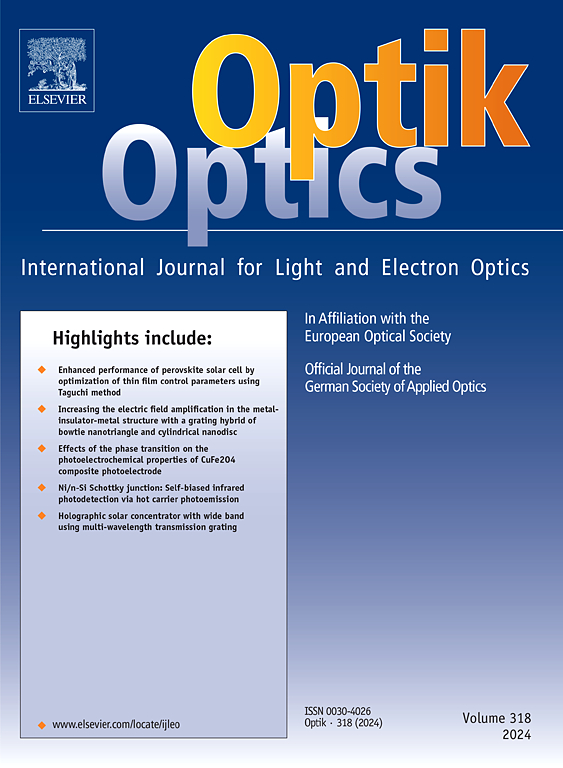A quantitative evaluation algorithm for the optical initial structure based on massive data comparison and selection
IF 3.1
3区 物理与天体物理
Q2 Engineering
引用次数: 0
Abstract
A good initial structure is the necessary foundation for accomplishing an excellent optical design. For now, the judgment of the initial structure is mostly based on the experience of the designers, lacking an effective quantitative assessment methodology. In this paper, the non-displacement zoom system is taken as an example, and a quantitative evaluation algorithm for the optical initial structure based on massive data comparison and selection is proposed, which can evaluate the optimization potential of different initial structures based on the design objectives, screen out the optimal initial structure parameters, and modify the original initial structure according to the selected parameters to make it more capable with the target design requirements. The whole calculation process does not involve the aberration theory, and the final constructed initial structure also shows good optimization potential and stability in the subsequent optimization. The method is simple, easy to understand, highly efficient, and can be easily extended to other types of optical systems, which is friendly to inexperienced designers and is expected to provide new direction for the development of current optical design methods.
一种基于海量数据比较与选择的光学初始结构定量评价算法
良好的初始结构是实现优良光学设计的必要基础。目前,对初始结构的判断大多基于设计者的经验,缺乏有效的定量评估方法。本文以无位移变焦系统为例,提出了一种基于大量数据比较和选择的光学初始结构定量评价算法,该算法可以根据设计目标对不同初始结构的优化潜力进行评价,筛选出最优的初始结构参数。并根据所选参数对原有初始结构进行修改,使其更能满足目标设计要求。整个计算过程不涉及像差理论,最终构建的初始结构在后续优化中也表现出良好的优化潜力和稳定性。该方法简单易懂,效率高,可推广到其他类型的光学系统,对经验不足的设计人员很友好,有望为当前光学设计方法的发展提供新的方向。
本文章由计算机程序翻译,如有差异,请以英文原文为准。
求助全文
约1分钟内获得全文
求助全文
来源期刊

Optik
物理-光学
CiteScore
6.90
自引率
12.90%
发文量
1471
审稿时长
46 days
期刊介绍:
Optik publishes articles on all subjects related to light and electron optics and offers a survey on the state of research and technical development within the following fields:
Optics:
-Optics design, geometrical and beam optics, wave optics-
Optical and micro-optical components, diffractive optics, devices and systems-
Photoelectric and optoelectronic devices-
Optical properties of materials, nonlinear optics, wave propagation and transmission in homogeneous and inhomogeneous materials-
Information optics, image formation and processing, holographic techniques, microscopes and spectrometer techniques, and image analysis-
Optical testing and measuring techniques-
Optical communication and computing-
Physiological optics-
As well as other related topics.
 求助内容:
求助内容: 应助结果提醒方式:
应助结果提醒方式:


